Aug
27
2019
 Acupuncture is defined as an intervention involving placing thin needles into specified acupuncture points in order to relieve symptoms or promote healing. What is special about the acupoints? They are supposed to be locations where the flow of life force (chi) can be manipulated. There are a few problems with the claims made for acupuncture. First, there is no place for vitalism – belief in a life force – in modern science. There is no evidence that it exists and no reason to hypothesize that it exists. It is worse than wrong. It is unnecessary. There is also no convincing evidence, after a century of research and thousands of studies, that acupuncture works for anything.
Acupuncture is defined as an intervention involving placing thin needles into specified acupuncture points in order to relieve symptoms or promote healing. What is special about the acupoints? They are supposed to be locations where the flow of life force (chi) can be manipulated. There are a few problems with the claims made for acupuncture. First, there is no place for vitalism – belief in a life force – in modern science. There is no evidence that it exists and no reason to hypothesize that it exists. It is worse than wrong. It is unnecessary. There is also no convincing evidence, after a century of research and thousands of studies, that acupuncture works for anything.
But also, an independently fatal flaw in the notion of acupuncture is that there is no evidence that acupuncture points exist. They are a complete fiction. They have no basis in anatomy, physiology, neuroscience, biochemistry, or empirical evidence. A recent study highlights this fact – Accuracy and Precision in Acupuncture Point Location: A Critical Systematic Review. This is a review by acupuncturists in the Journal of Acupuncture and Meridian Studies. The authors reviewed the literature for any studies that looked at the precision and reliability of the location of acupoints and found:
Considerable variation in localization of acupoints was reported among qualified medical acupuncturists. Variation in point location among qualified non-medical acupuncturists is unknown due to lack of any identified study. The directional method was found to be significantly inaccurate and imprecise in all studies that evaluated the method.
So acupuncturists cannot agree upon where alleged acupoints actually are on the body, and the primary method to localize them was both inaccurate and imprecise. The simplest explanation for this fact is that acupoints don’t exist. Even if you want to hold out the illogical conclusion that acupoints do exist, even though they have no basis in theory and they cannot be detected by any objective measure, you cannot avoid the conclusion based on this evidence that acupuncturists don’t know where they are. So how, then, can they claim to be able to stick needles into acupoints? Short answer – they can’t.
Continue Reading »
Aug
26
2019
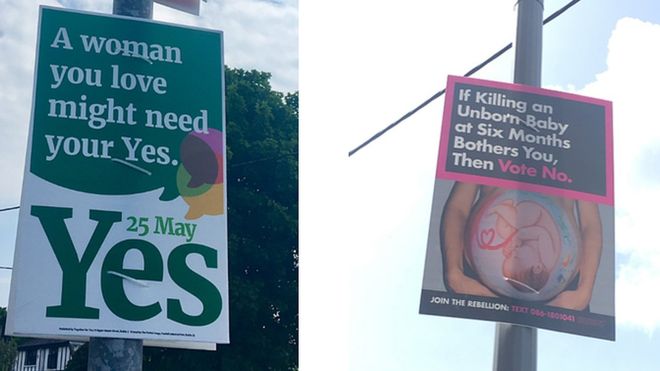 Here’s yet another reminder that our memories are reconstructed fabrications our brains use to reinforce existing narratives. A new study of 3,140 participants finds that exposing people to fake news created false memories of the depicted events in about half of subjects.
Here’s yet another reminder that our memories are reconstructed fabrications our brains use to reinforce existing narratives. A new study of 3,140 participants finds that exposing people to fake news created false memories of the depicted events in about half of subjects.
What the researchers did specifically was show people in Ireland prior to the 2018 referendum on abortion, six news stories, two of which were fake. One of the fake stories was about campaign posters being destroyed after it was discovered that they were illegally funded by an American. Later, about half of the subjects reported false memories regarding at least one of the two fake stories. About one third of the subjects included details in their fake memories that were not included in the original stories.
Further, subjects were more likely to form false memories if the fake news dealt with a scandal for the other side (so “yes” voters were more likely to form false memories regarding a scandal involving the “no” vote). And perhaps most concerning, when the subjects were told which news stories were fake, this only decreased the false memories slightly. It did not correct the effect.
None of this is entirely new, but it is the first study like it involving a real-time political event. This research reinforces what psychologists have been demonstrating for years – that memories are constructed, and then reconstructed in remembering, that memories are partly thematic and the details will morph to fit the theme, and that fake memories are relatively easy to create. Once formed a fake memory feels just like a real memory. They are just as vivid and compelling as a genuine or more accurate memory. Vividness does not predict accuracy, despite the fact that this is what most people assume.
Continue Reading »
Aug
22
2019
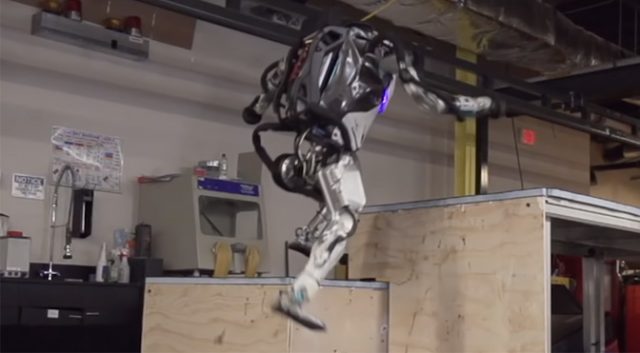 A recent commentary in Nature Communications echoes, I think, a key understanding of animal intelligence, and therefore provides an important lesson for artificial intelligence (AI). The author, Anthony Zador, extends what has been an important paradigm shift in our approach to AI.
A recent commentary in Nature Communications echoes, I think, a key understanding of animal intelligence, and therefore provides an important lesson for artificial intelligence (AI). The author, Anthony Zador, extends what has been an important paradigm shift in our approach to AI.
Early concepts of AI, as reflected in science fiction at least (which I know does not necessarily track with actual developments in the industry) was that the ultimate goal was to develop a general AI that could master tasks from the top down through abstract understanding – like humans. Actual developers of AI, however, quickly learned that this might not be the best approach, and in any case is decades away at least. I remember reading in the 1980s about approaching AI more from the ground up.
The first analogy I recall is that of walking – how do we program a robot to walk? We don’t need a human cortex to do this. Insects can walk. Also, much of the processing required to walk is in the deeper more primitive parts of our brain, not the more complex cortex. So maybe we should create the technology for a robot to walk by starting with the most basic algorithms similar to those used by the simplest creatures, and then build up from there.
My memory, at least, is that this completely flipped my concept of how we were approaching AI. Don’t build a robot with general intelligence who can do anything and then teach it to walk. You don’t even build algorithms that can walk. You break walking down into its component parts, and then build algorithms that can master and combine each of those parts. This was reinforced by my later study of neuroscience. Yeah – that is exactly how our brains work. We have modules and networks that do very specific things, and they combine together to produce more and more sophisticated behavior.
Continue Reading »
Aug
20
2019
 Remember that scene at the end of Total Recall when the alien machine melts the polar ice on Mars, and within a minute gives Mars a warm breathable atmosphere? Of course, there was a lot wrong with that scene – not the least of which is that the polar caps on Mars are not composed of anything close to a breathable atmosphere. The northern ice cap is mostly composed of water. There is a thin top layer of carbon dioxide (CO2) ice during the winter that sublimates (turns into gas) in the summer. The southern cap undergoes the same process, and is also made of water ice and CO2 ice, but apparently has more CO2 ice than the northern cap. You will notice there is no oxygen in there.
Remember that scene at the end of Total Recall when the alien machine melts the polar ice on Mars, and within a minute gives Mars a warm breathable atmosphere? Of course, there was a lot wrong with that scene – not the least of which is that the polar caps on Mars are not composed of anything close to a breathable atmosphere. The northern ice cap is mostly composed of water. There is a thin top layer of carbon dioxide (CO2) ice during the winter that sublimates (turns into gas) in the summer. The southern cap undergoes the same process, and is also made of water ice and CO2 ice, but apparently has more CO2 ice than the northern cap. You will notice there is no oxygen in there.
But could, theoretically, we melt the ice caps as part of a plan to terraform Mars? Elon Musk previously floated the idea of nuking Mars – exploding many nuclear bombs over the ice caps in order to quickly melt them, turning the water and CO2 into vapor and thereby warming the planet and thickening its atmosphere. The result would not be an instantly comfortable and breathable atmosphere, but could take us a long way to making Mars more habitable. Musk’s idea was soundly criticized, but recently he tweeted the idea again (although no one is sure if he is serious or not, or just trying to sell T-shirts), but it has resurrected the discussion about whether nuking Mars is a viable option.
A 2018 paper published in Nature crunched the numbers of what we know about non-atmospheric CO2 reserves on Mars. They counted not just the ice caps, but also the carbon bound in the soil. They concluded:
These results suggest that there is not enough CO2 remaining on Mars to provide significant greenhouse warming were the gas to be emplaced into the atmosphere; in addition, most of the CO2 gas in these reservoirs is not accessible and thus cannot be readily mobilized. As a result, we conclude that terraforming Mars is not possible using present-day technology.
That’s discouraging. There isn’t an atmosphere on Mars waiting to be melted or liberated. There is also the question of whether or not exploding nukes over the poles would even work to melt the ice. By some calculations we would need thousands of nukes per day over weeks to accomplish this. And then, of course, the gases would freeze again, because there is not enough CO2 to sustain warming. So – no “blue skies on Mars” anytime soon.
Continue Reading »
Aug
19
2019
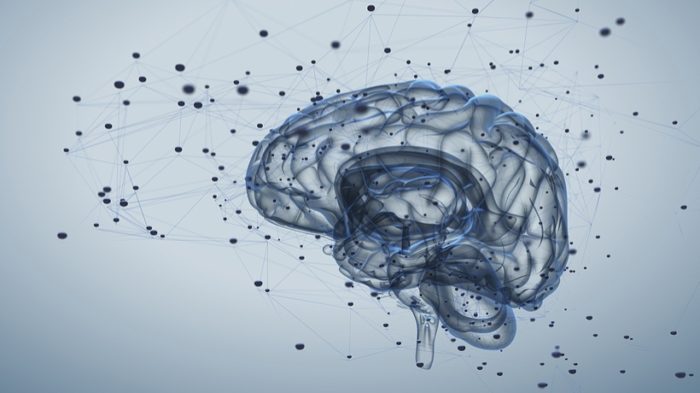 There is a common style of journalism, that you are almost certainly very familiar with, in which the report starts with a personal story, then delves into the facts at hand often with reference to the framing story and others like it, and returns at the end to the original personal connection. This format is so common it’s a cliche, and often the desire to connect the actual new information to an emotional story takes over the reporting and undermines the facts.
There is a common style of journalism, that you are almost certainly very familiar with, in which the report starts with a personal story, then delves into the facts at hand often with reference to the framing story and others like it, and returns at the end to the original personal connection. This format is so common it’s a cliche, and often the desire to connect the actual new information to an emotional story takes over the reporting and undermines the facts.
This format reflects a more general phenomenon – that people are generally more interested in and influenced by a good narrative than by dry facts. Or are we? New research suggests that while the answer is still generally yes, there is some more nuance here (isn’t there always?). The researchers did three studies in which they compared the effects of strong vs weak facts presented either alone or embedded in a story. In the first two studies the information was about a fictitious new phone. The weak fact was that the phone could withstand a fall of 3 feet. The strong fact was that the phone could withstand a fall of 30 feet. What they found in both studies is that the weak fact was more persuasive when presented embedded in a story than along, while the strong fact was less persuasive.
They then did a third study about a fictitious flu medicine, and asked subjects if they would give their e-mail address for further information. People are generally reluctant to give away their e-mail address unless it’s worth it, so this was a good test of how persuasive the information was. When a strong fact about the medicine was given alone, 34% of the participants were willing to provide their e-mail. When embedded in a story, only 18% provided their e-mail.
So, what is responsible for this reversal of the normal effect that stories are generally more persuasive than dry facts? The authors suggest that stories may impair our ability to evaluate factual information. This is not unreasonable, and is suggested by other research as well. To a much greater extent than you might think, cognition is a zero-sum game. When you allocate resources to one task, those resources are taken away from other mental tasks (this basic process is called “interference” by psychologists). Further, adding complexity to brain processing, even if this leads to more sophisticated analysis of information, tends to slow down the whole process. And also, parts of the brain can directly suppress the functioning of other parts of the brain. This inhibitory function is actually a critical part of how the brain works together.
Continue Reading »
Aug
16
2019
 Remember the “Solar Freakin’ Roadways?” The idea was to pave roads with solar cells that would produce electricity for the grid. The power could also be used for LEDs that could serve as traffic lights and warning signals, and the power could melt snow and ice to boot. I wrote about this in 2014 and at the time I was not impressed with the arguments that were being made.
Remember the “Solar Freakin’ Roadways?” The idea was to pave roads with solar cells that would produce electricity for the grid. The power could also be used for LEDs that could serve as traffic lights and warning signals, and the power could melt snow and ice to boot. I wrote about this in 2014 and at the time I was not impressed with the arguments that were being made.
As many people pointed out – there are huge practical problems with this concept. The main problem is that you would have to engineer the solar cells to withstand traffic and all the abuse that roads take. This would likely degrade their efficiency over time, and also make upkeep very expensive. For the money you would be far better off simply installing solar panels on rooftops, or even suspending them over roads or wherever that might make sense.
I wasn’t entirely negative. I liked the idea in theory, just thought there were serious practical hurdles and we need some real-world testing. I also said this:
“It’s also possible that such panels might find a niche use, but not be cost effective for our entire highway infrastructure. For example, they may find a market for private driveways. I would like not to have to plow or shovel my driveway, and it may reduce my energy bills a bit. Also, a driveway takes a lot less abuse than a highway.
Or perhaps parking lots, bike paths, or playgrounds may find a use. Perhaps they will be better for small back roads than highways, or the other way around, or they will be perfect for cities or sidewalks. Maybe airport runways might justify the cost.”
Well now it’s 5 years later, and we have some real-world testing. The largest test was in France, which two years ago installed a 1 kilometer stretch of solar roadway. Le Monde reports that the experiment was a complete failure. The roadway is deteriorating rapidly. A large section had to be completely demolished. Panels come loose and then are broken or dislodged by traffic. Leaves and other debris cover the surface. Also:
Continue Reading »
Aug
15
2019
 This is a great example of the unintended consequences that can result from making decisions based on scientific conjecture and preliminary hypotheses. In this case, the hypothesis was never a good one. If you are a pet owner, you may have noticed the recent trend toward grain-free dog or cat food. The justification for this trend is the notion that since dogs are essentially wolves, and wolves are pure carnivores, then we should not be feeding our dogs grains. This is basically the paleo diet for dogs.
This is a great example of the unintended consequences that can result from making decisions based on scientific conjecture and preliminary hypotheses. In this case, the hypothesis was never a good one. If you are a pet owner, you may have noticed the recent trend toward grain-free dog or cat food. The justification for this trend is the notion that since dogs are essentially wolves, and wolves are pure carnivores, then we should not be feeding our dogs grains. This is basically the paleo diet for dogs.
It should be noted, however, that many carnivores do need to get some plant matter in their diet. They may get this from the stomachs of the herbivores they eat. Wolves will also occasionally eat berries as a minor supplement to their diet. But sure, wolves don’t generally eat grains. But that is not the problematic premise here.
The problem with the grain-free diet claim is that while modern dogs are closely related to wolves, they are not wild wolves. They evolutionarily split from wild wolves 15-40,000 years ago. Over that time their diet has shifted significantly. They no longer hunt in packs, but live off the scraps of human civilization. And they have adapted.
So the grain-free theory is flawed, and we should not base dietary recommendations on theory alone anyway, but actually gather evidence to test those theories. Perhaps we already have, in an unintended ecological experiment. In 2018 the FDA noticed a spike in reported cases of dilated cardiomyopathy (DCM) in dogs. Previous years had 1-3 reported cases per year, in 2018 there were 320, and 2019 is on track to exceed this. This is still a small number compared to the millions of pet dogs in the US, but is likely massive underreporting. There is also likely some reporting bias here – one article on social media might explain the spike, rather than a true increase. But the FDA had to investigate the increase to see if it were real and what the cause might be.
Continue Reading »
Aug
13
2019
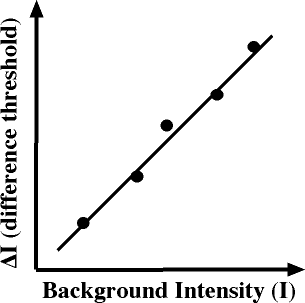 I confess I have never heard (or at least don’t remember ever hearing) about Weber’s Law (pronouned vayber) until reading about it with this news item. It is the Law of Just Noticeable Differences. It deals with the minimum difference in a stimulus necessary to notice. While clearly established, and there are many hypotheses to explain the phenomenon, there has never been a way to test which hypothesis is correct. The news items relates to new evidence which may provide a mechanism.
I confess I have never heard (or at least don’t remember ever hearing) about Weber’s Law (pronouned vayber) until reading about it with this news item. It is the Law of Just Noticeable Differences. It deals with the minimum difference in a stimulus necessary to notice. While clearly established, and there are many hypotheses to explain the phenomenon, there has never been a way to test which hypothesis is correct. The news items relates to new evidence which may provide a mechanism.
Weber’s law applies to all sensory modalities – sight, sound, taste, smell, and tactile sense. For any sensory stimulus there is a minimum difference that a person can notice. For example, if you are visually comparing the length of two lines trying to determine which one is longer, or if you are holding two weights and trying to determine which one is heavier. There is a minimum difference that is necessary to be able to notice. Experimentally this means there is a relationship between the ratio of the difference and the probability of determining the correct answer.
So if you are trying to determine which light is brighter, an experiment may determine that for lights of 100 and 110 lumens there is a 75% chance of correctly detecting which light is brighter. What Weber’s law states is that one this relationship is determined, it holds true no matter what the absolute value of the stimulus is, as long as the ratio is the same. So for lumens of 200 and 220, or 1000 and 1100, there would still be a 75% probability of being correct. The only thing that matters is the ratio.
As you might expect, there is a lot of nuance to the law, such as subtle variations in the math and differences between vertebrates and insects, etc., which I won’t get into. They are not important for the current discussion, but know that they exist.
Continue Reading »
Aug
12
2019
 This was highly predictable. Of course there are conspiracies surrounding the apparent recent suicide of Jeffrey Epstein while in prison. That’s just background noise now. There are conspiracies about everything. Apparently the two shootings last weekend were false flag operations, because #conspiracies.
This was highly predictable. Of course there are conspiracies surrounding the apparent recent suicide of Jeffrey Epstein while in prison. That’s just background noise now. There are conspiracies about everything. Apparently the two shootings last weekend were false flag operations, because #conspiracies.
Just as predictably, news about the conspiracy theories, how they spread, and how they are treated by the media is itself news. And yes I get the irony that here I am blogging about it. It’s turtles all the way down. I guess in order to have something interesting to say I have to get one level more meta than everyone else – does that do it? Getting meta about being meta?
By now this phenomenon is old news. The traditional editorial filters are no longer in place. They have largely been replaced by algorithms which determine which news items are “trending.” This becomes a self-reinforcing feedback loop that allows the worst information to spread. Of course, this has always happened. Sensationalism and propaganda spread because they are interesting. They break up the mundane monotony of our lives. They are a real-life soap opera.
Jonathan Swift observed in 1710, “Falsehood flies, and the Truth comes limping after it.” There are also several versions of, “A Lie Can Travel Halfway Around the World While the Truth Is Putting On Its Shoes.” The source of this quote, often mistakingly attributed to Mark Twain, is unclear. The point is – the inherent advantage that false but sensational information has in the human mind over prosaic truth has long been observed. And that, of course, is the ultimate medium, the human mind. The external method of spreading false information is incidental to the core phenomenon, but it can influence the speed with which such information spreads and the credibility it is given.
Continue Reading »
Aug
09
2019
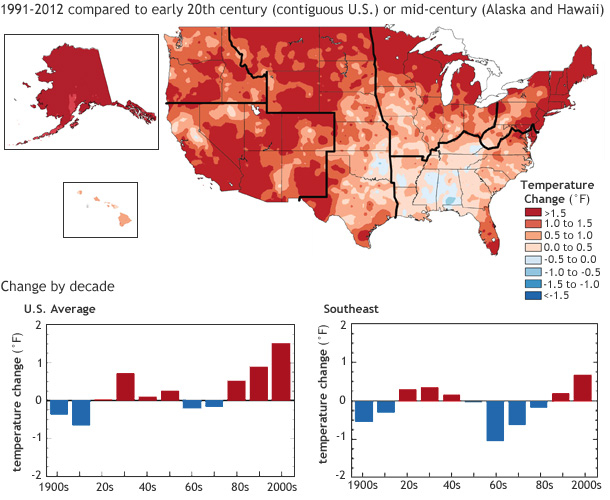 There is an industry of misinformation fueling climate change denial. It is often fairly sophisticated, and because it is dealing with a highly complex technical area, it’s easy to create an argument that sounds compelling. This results (as if often evidenced right here in the comments) in people who are confident that they are good skeptics and climate fearmongering is all nonsense. Of course they have to simultaneously believe in a rather absurd conspiracy theory regarding the scientific community, but they make that work somehow too.
There is an industry of misinformation fueling climate change denial. It is often fairly sophisticated, and because it is dealing with a highly complex technical area, it’s easy to create an argument that sounds compelling. This results (as if often evidenced right here in the comments) in people who are confident that they are good skeptics and climate fearmongering is all nonsense. Of course they have to simultaneously believe in a rather absurd conspiracy theory regarding the scientific community, but they make that work somehow too.
Here are a couple of recent examples, both of which involve some subtle cherry picking. The first has to do with electric cars, which are frequently opposed by the denialists, in that they oppose subsidies to help bootstrap the market. This involves the “solution aversion” aspect of climate change denial – deniers are really motivated by the proposed solutions to climate change, which goes against either their politics or other interests. The claim that is often made is that producing electric cars has a higher carbon footprint than gasoline cars, and that if you are charging your car off the grid you are probably getting that electricity from fossil fuels. Therefore – electric cars are worse for the environment.
At the very least, I see climate change deniers delight in how stupid this makes the climate change believers appear. This is a great example of cherry picking, because the two basic facts are correct but they are not the whole picture. Here, for example, is an article posted by Breitbart claiming that batteries are not green, concluding:
One of the authors, Mats-Ola Larsson at IVL, has made a calculation of how long you have to drive a petrol or diesel before it has released as much carbon dioxide as battery manufacturing has caused.
“The result was 2.7 years for a battery of the same size as the Nissan Leaf and 8.2 years for a battery of the Tesla-size.”
Truly the enduring mystery of why Tesla is now more highly valued than such non-Potemkin U.S. car manufacturers as Ford and General Motors grows more mysterious by the hour.
Continue Reading »
 Acupuncture is defined as an intervention involving placing thin needles into specified acupuncture points in order to relieve symptoms or promote healing. What is special about the acupoints? They are supposed to be locations where the flow of life force (chi) can be manipulated. There are a few problems with the claims made for acupuncture. First, there is no place for vitalism – belief in a life force – in modern science. There is no evidence that it exists and no reason to hypothesize that it exists. It is worse than wrong. It is unnecessary. There is also no convincing evidence, after a century of research and thousands of studies, that acupuncture works for anything.
Acupuncture is defined as an intervention involving placing thin needles into specified acupuncture points in order to relieve symptoms or promote healing. What is special about the acupoints? They are supposed to be locations where the flow of life force (chi) can be manipulated. There are a few problems with the claims made for acupuncture. First, there is no place for vitalism – belief in a life force – in modern science. There is no evidence that it exists and no reason to hypothesize that it exists. It is worse than wrong. It is unnecessary. There is also no convincing evidence, after a century of research and thousands of studies, that acupuncture works for anything.
 Here’s yet another reminder that our memories are reconstructed fabrications our brains use to reinforce existing narratives.
Here’s yet another reminder that our memories are reconstructed fabrications our brains use to reinforce existing narratives.
 Remember that scene at the end of Total Recall when the alien machine melts the polar ice on Mars, and within a minute gives Mars a warm breathable atmosphere? Of course, there was a lot wrong with that scene – not the least of which is that the polar caps on Mars are not composed of anything close to a breathable atmosphere. The northern ice cap is mostly composed of water. There is a thin top layer of carbon dioxide (CO2) ice during the winter that sublimates (turns into gas) in the summer. The southern cap undergoes the same process, and is also made of water ice and CO2 ice, but apparently has more CO2 ice than the northern cap. You will notice there is no oxygen in there.
Remember that scene at the end of Total Recall when the alien machine melts the polar ice on Mars, and within a minute gives Mars a warm breathable atmosphere? Of course, there was a lot wrong with that scene – not the least of which is that the polar caps on Mars are not composed of anything close to a breathable atmosphere. The northern ice cap is mostly composed of water. There is a thin top layer of carbon dioxide (CO2) ice during the winter that sublimates (turns into gas) in the summer. The southern cap undergoes the same process, and is also made of water ice and CO2 ice, but apparently has more CO2 ice than the northern cap. You will notice there is no oxygen in there. There is a common style of journalism, that you are almost certainly very familiar with, in which the report starts with a personal story, then delves into the facts at hand often with reference to the framing story and others like it, and returns at the end to the original personal connection. This format is so common it’s a cliche, and often the desire to connect the actual new information to an emotional story takes over the reporting and undermines the facts.
There is a common style of journalism, that you are almost certainly very familiar with, in which the report starts with a personal story, then delves into the facts at hand often with reference to the framing story and others like it, and returns at the end to the original personal connection. This format is so common it’s a cliche, and often the desire to connect the actual new information to an emotional story takes over the reporting and undermines the facts. Remember the “Solar Freakin’ Roadways?” The idea was to pave roads with solar cells that would produce electricity for the grid. The power could also be used for LEDs that could serve as traffic lights and warning signals, and the power could melt snow and ice to boot.
Remember the “Solar Freakin’ Roadways?” The idea was to pave roads with solar cells that would produce electricity for the grid. The power could also be used for LEDs that could serve as traffic lights and warning signals, and the power could melt snow and ice to boot.  This is a great example of the unintended consequences that can result from making decisions based on scientific conjecture and preliminary hypotheses. In this case, the hypothesis was never a good one. If you are a pet owner, you may have noticed the recent trend toward
This is a great example of the unintended consequences that can result from making decisions based on scientific conjecture and preliminary hypotheses. In this case, the hypothesis was never a good one. If you are a pet owner, you may have noticed the recent trend toward  I confess I have never heard (or at least don’t remember ever hearing) about
I confess I have never heard (or at least don’t remember ever hearing) about  This was highly predictable. Of course there are conspiracies surrounding the apparent recent suicide of Jeffrey Epstein while in prison. That’s just background noise now. There are conspiracies about everything. Apparently the two shootings last weekend were false flag operations, because #conspiracies.
This was highly predictable. Of course there are conspiracies surrounding the apparent recent suicide of Jeffrey Epstein while in prison. That’s just background noise now. There are conspiracies about everything. Apparently the two shootings last weekend were false flag operations, because #conspiracies. There is an industry of misinformation fueling climate change denial. It is often fairly sophisticated, and because it is dealing with a highly complex technical area, it’s easy to create an argument that sounds compelling. This results (as if often evidenced right here in the comments) in people who are confident that they are good skeptics and climate fearmongering is all nonsense. Of course they have to simultaneously believe in a rather absurd conspiracy theory regarding the scientific community, but they make that work somehow too.
There is an industry of misinformation fueling climate change denial. It is often fairly sophisticated, and because it is dealing with a highly complex technical area, it’s easy to create an argument that sounds compelling. This results (as if often evidenced right here in the comments) in people who are confident that they are good skeptics and climate fearmongering is all nonsense. Of course they have to simultaneously believe in a rather absurd conspiracy theory regarding the scientific community, but they make that work somehow too.




